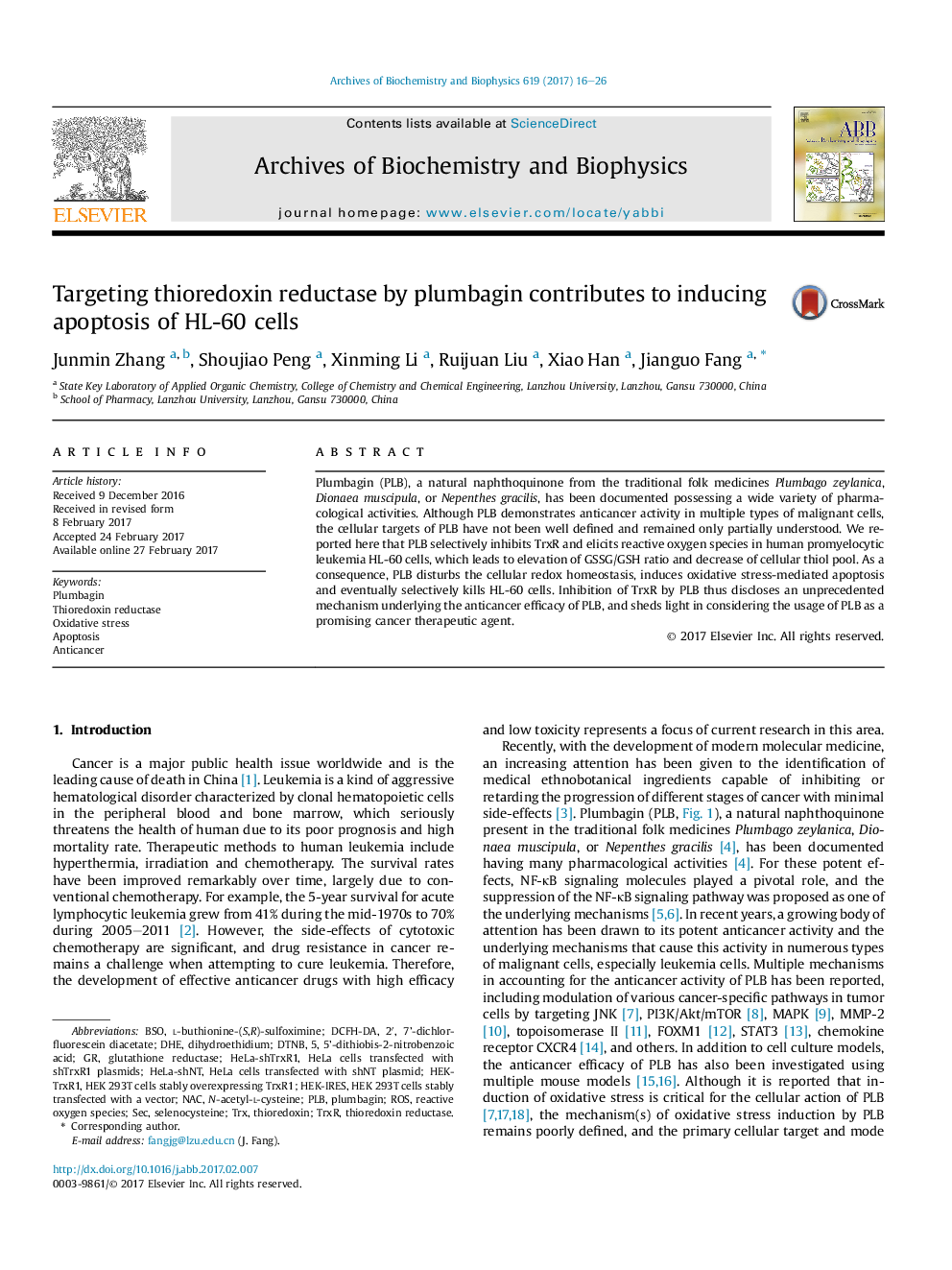| Article ID | Journal | Published Year | Pages | File Type |
|---|---|---|---|---|
| 5504409 | Archives of Biochemistry and Biophysics | 2017 | 11 Pages |
â¢Plumbagin (PLB) selectively kills human promyelocytic leukemia HL-60 cells.â¢Inhibition of thioredoxin reductase (TrxR) by PLB contributes to its cytotoxicity.â¢PLB causes elevation of ROS and disruption of cellular redox balance.â¢PLB induces oxidative stress-mediated apoptosis of HL-60 cells.
Plumbagin (PLB), a natural naphthoquinone from the traditional folk medicines Plumbago zeylanica, Dionaea muscipula, or Nepenthes gracilis, has been documented possessing a wide variety of pharmacological activities. Although PLB demonstrates anticancer activity in multiple types of malignant cells, the cellular targets of PLB have not been well defined and remained only partially understood. We reported here that PLB selectively inhibits TrxR and elicits reactive oxygen species in human promyelocytic leukemia HL-60Â cells, which leads to elevation of GSSG/GSH ratio and decrease of cellular thiol pool. As a consequence, PLB disturbs the cellular redox homeostasis, induces oxidative stress-mediated apoptosis and eventually selectively kills HL-60Â cells. Inhibition of TrxR by PLB thus discloses an unprecedented mechanism underlying the anticancer efficacy of PLB, and sheds light in considering the usage of PLB as a promising cancer therapeutic agent.
Graphical abstractDownload high-res image (351KB)Download full-size image
